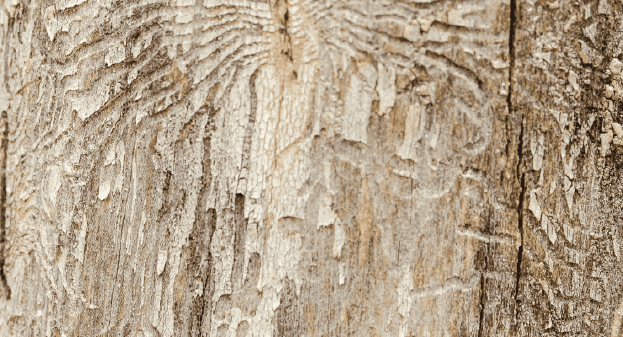The elm tree has long reigned supreme with its sweeping canopies and towering presence. The two most common types of elm trees in Colorado are the American and Siberian elm. These majestic giants face a formidable adversary known as Dutch Elm Disease (DED). We will explore the insidious nature of Dutch Elm Disease and provide insights into recognizing its telltale signs.
DED is caused by a trio of closely related fungi. These fungi are primarily transmitted by bark beetles, such as the European elm bark beetle, which burrow into the bark infecting the trees, introducing the pathogen. Once inside, the fungi multiply, clogging the tree’s water-conducting vessels and choking off its life source, resulting in death within a few years. This is known as “Flagging” and is a sign the tree has been infected. The discoloration usually starts at the edges and works its way inward, giving the tree a scorched appearance.
Below are signs of Dutch Elm Disease.
Streaking on Bark
Infected trees may develop streaks or stains on their bark. These streaks are often gray to brown and may be accompanied by a foamy or oozing substance. This is the result of the fungus spreading beneath the bark.
Branch Dieback
As the disease progresses, entire branches may die, often starting from the tips and moving inward. This dieback is a direct consequence of the fungal blockage of water and nutrient flow.
Unusual Foliage Patterns
Infected elm trees might produce smaller, distorted leaves, or leaves with irregular margins. These abnormal foliage patterns can serve as additional indicators of Dutch Elm Disease.
Death of the Tree
If Dutch Elm Disease goes untreated, it can lead to the eventual death of the entire tree. This is a tragedy not only for the tree itself but for the surrounding ecosystem and the aesthetic value of the landscape.
Recognizing the signs of this disease early can make all the difference in saving these majestic elms. If you suspect DED in your elm trees, consult a certified arborist or tree care professional for proper diagnosis and treatment.
If you see signs of Dutch Elm Disease, contact DCPS’s Plant and Tree Health Care team at info@denvercps.com or complete the form below. Our team of certified arborists are available to provide a strategy to help preserve your trees.

